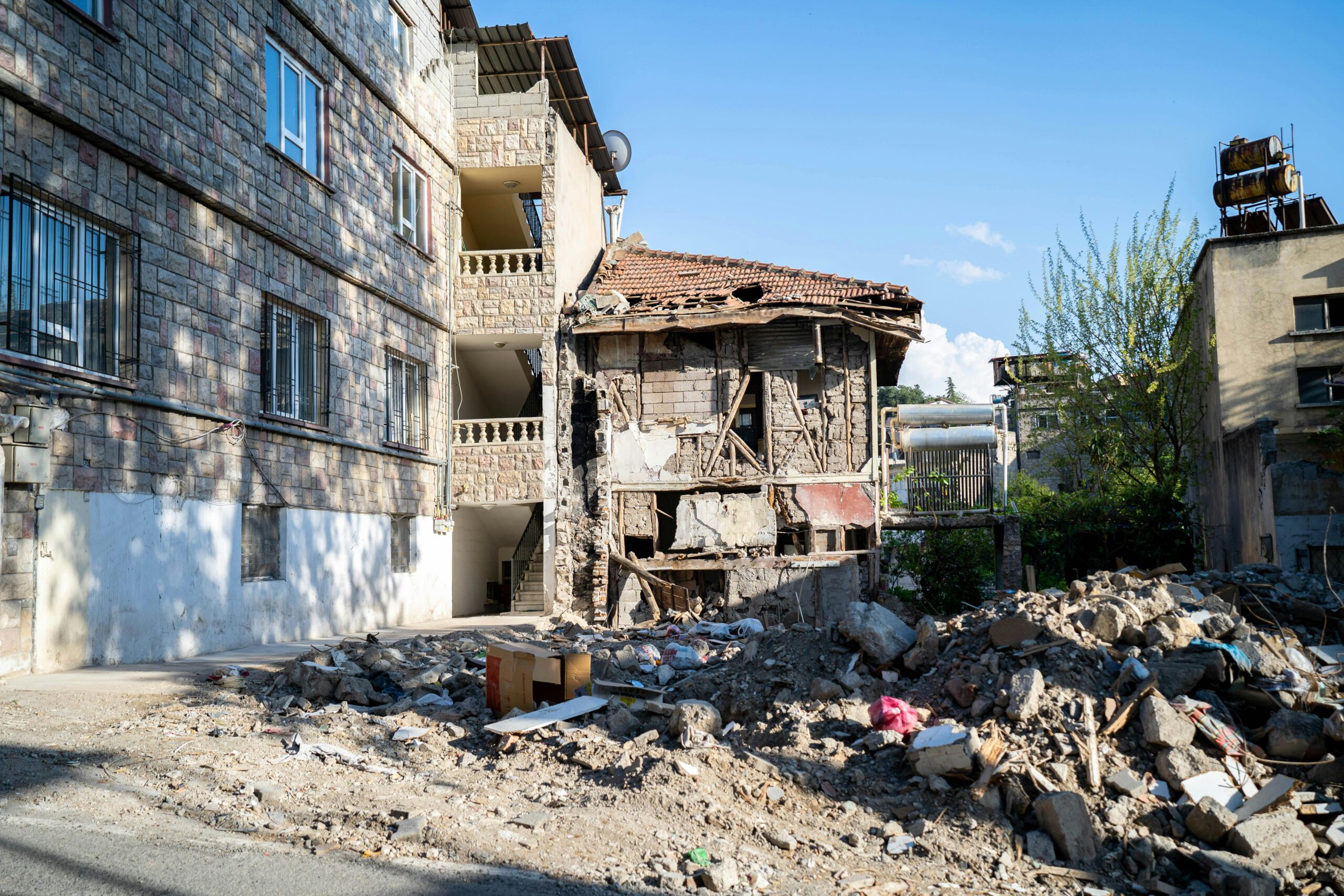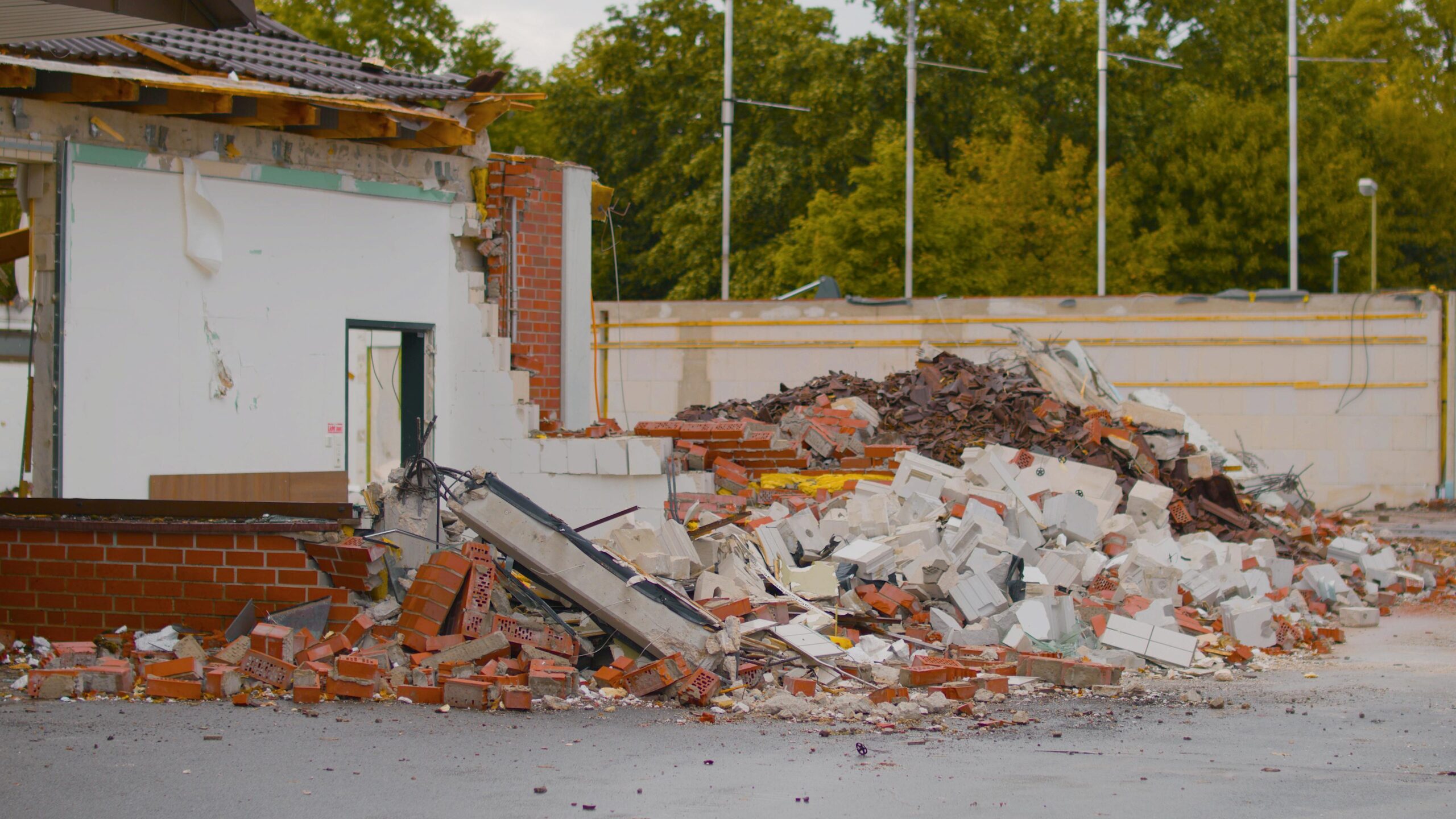5901 Botham Jean Blvd, Dallas, TX 75215
The Importance of Waste Management for Contractors
May 7, 2025New York City generates approximately 19,500 tons of construction and demolition waste daily, accounting for over 60% of the city’s entire waste stream. This substantial volume presents both a challenge and an opportunity for contractors working within the five boroughs.
Waste management has evolved beyond an environmental concern to become a crucial business factor impacting a contractor’s bottom line. Effective practices reduce disposal costs through lower landfill fees and create opportunities for material reuse and recycling, leading to tangible savings on construction projects.
The NYC Department of Design and Construction recognizes these dual benefits. The DDC has implemented new specifications and requirements to improve waste management across its projects, encouraging contractors to develop comprehensive plans that prioritize reduction, reuse, and recycling of construction debris.
What Are the Key Strategies for Reducing Construction Waste?

Construction waste constitutes about 30% of global waste, heavily impacting landfills and the environment. Effective waste reduction strategies not only promote sustainability but also offer substantial cost savings for contractors and project managers. Here are key approaches to significantly reduce construction waste.
Developing a Comprehensive Waste Management Plan
A well-designed Waste Management Plan is crucial for any successful waste reduction effort. This document sets clear goals, outlines specific responsibilities, and details how materials will be managed throughout the project lifecycle.
An effective Waste Management Plan should include:
- Specific waste diversion targets (aim for at least 75-90% waste diversion)
- Detailed inventory of materials expected to be generated
- Designated roles and responsibilities for team members
- Procedures for on-site waste sorting and storage
- Documentation requirements for tracking waste
Creating this plan before construction begins allows for strategic decision-making that can significantly reduce waste from the start. Many successful projects conduct a pre-construction waste audit to better anticipate material flows.
Implementing Source Separation Systems
Source separation involves sorting different waste materials at the point of generation rather than mixing them. This approach greatly improves recycling rates and maintains material quality.
Effective source separation requires:
- Clearly labeled containers for different materials (concrete, wood, metals, plastics)
- Strategic placement of collection points throughout the construction site
- Regular worker training on proper sorting techniques
- Routine inspections to prevent contamination between material streams
Studies show that source-separated materials typically yield higher market value and face fewer recycling restrictions than mixed waste. For example, clean separated concrete can be crushed and used as aggregate for new construction projects.
Exploring Mixed Waste Recycling Options
When source separation isn’t feasible, mixed waste recycling facilities can process commingled construction debris. These facilities use mechanical and manual sorting technologies to recover recyclable materials.
Key considerations for mixed waste recycling include researching local facilities that specialize in construction and demolition waste processing. Verify their recovery rates and accepted materials before sending waste. Prepare materials according to facility requirements to maximize recycling potential.
While typically less effective than source separation, mixed waste recycling still diverts significant waste from landfills. Modern facilities can achieve recovery rates of 70-90% depending on the input material quality.
Implementing the Reduce-Reuse-Recycle Hierarchy
Following the waste hierarchy prioritizes the most environmentally beneficial waste management strategies:
Reduce
Focus on preventing waste generation:
- Order materials in precise quantities to minimize excess
- Use Building Information Modeling (BIM) to enhance accuracy and reduce errors
- Consider prefabrication to minimize on-site cutting and waste
- Design buildings using standard material dimensions to reduce offcuts
Reuse
Before recycling, explore opportunities for direct reuse:
- Salvage materials like doors, windows, and fixtures during demolition
- Create dedicated staging areas for reusable materials
- Reuse formwork, bracing, and structural supports multiple times
- Connect with organizations that accept surplus building materials
Recycle
When reduction and reuse aren’t possible, prioritize recycling:
- Partner with specialized recyclers for specific materials
- Maintain material separation to ensure recyclability
- Track recycling metrics to identify improvement opportunities
Protecting Materials On-Site
Proper material protection prevents damage and waste:
- Store weather-sensitive materials in covered areas
- Keep materials elevated off the ground to prevent moisture damage
- Follow manufacturer storage recommendations
- Implement just-in-time delivery for sensitive materials
On large projects, damaged materials from improper storage can account for 5-10% of total construction waste. Simple precautions dramatically reduce this waste stream.
Training and Education
Worker education is essential for successful waste reduction. Regular training sessions should cover:
- Project-specific waste management goals and procedures
- Proper material handling techniques
- Identification of recyclable materials
- Importance of contamination prevention
Projects that implement comprehensive worker training typically achieve 15-20% higher diversion rates than those without structured education programs.
By implementing these key strategies, construction projects can significantly reduce waste generation while improving efficiency and reducing costs. The most successful waste reduction programs integrate these approaches throughout the project lifecycle, from initial design through final construction.
What Are the Economic Benefits of Sustainable Waste Management?

Sustainable waste management practices offer contractors significant financial advantages beyond their environmental impact. The economic benefits start with direct cost savings on disposal fees. Construction waste disposal costs are rising nationwide, and each ton of material diverted from landfills results in immediate savings.
Reduction in transportation expenses is another notable economic benefit. Fewer trips to disposal facilities mean lower fuel consumption, decreased vehicle maintenance needs, and reduced labor hours. For large-scale projects, these transportation savings can quickly add up to substantial amounts.
Revenue generation through material recovery is a compelling economic incentive. Many contractors now recognize that construction waste contains valuable materials. Metals like copper, aluminum, and steel command strong market prices when recycled. Wood, concrete, and certain plastics can be processed and sold to recycling facilities.
Cost Savings Through Efficient Material Use
Sustainable waste management begins with strategic planning and procurement. By ordering materials precisely and implementing just-in-time delivery systems, contractors minimize excess materials that would otherwise become waste. Digital tools like Building Information Modeling (BIM) optimize material specifications and reduce costly over-ordering.
On-site material protection systems prevent damage and spoilage that lead to waste. Proper storage facilities for sensitive materials ensure they remain usable throughout the project timeline, significantly reducing replacement costs for materials damaged due to improper storage.
Case studies demonstrate remarkable financial outcomes. A commercial construction project in Dallas implemented comprehensive waste sorting and recycling protocols, diverting 85% of construction waste from landfills. This diversion resulted in $175,000 of disposal fee savings over the project duration.
Long-term Economic Advantages
The economic benefits extend beyond immediate cost savings. Contractors who demonstrate effective waste management practices gain competitive advantages when bidding on projects with sustainability requirements. Many clients now specifically request waste diversion metrics in project proposals.
Regulatory compliance is another economic consideration. Municipalities are increasingly implementing strict construction waste disposal regulations. Companies with established sustainable waste management systems avoid potential fines and penalties for improper disposal practices.
Reputation enhancement among environmentally conscious clients drives business growth. Contractors who can demonstrate tangible waste reduction metrics attract clients committed to sustainable building practices. This reputation advantage translates directly to increased contract opportunities and business expansion.
Deconstruction rather than demolition enables valuable material recovery. A recent commercial renovation project recovered $87,000 worth of fixtures, doors, and reusable materials through careful deconstruction techniques. These materials were either repurposed within the project or sold to reclamation companies.
Measuring Economic Performance
Contractors can quantify waste management economic benefits through several metrics. Tracking disposal fee savings provides the most direct measurement. Comparing actual disposal costs against projected costs without waste diversion clearly demonstrates financial impact.
Material recovery value is another important metric. Tracking revenue generated from recycling and material sales helps contractors understand the full economic potential of waste streams. Some contractors now view certain waste materials as valuable commodities rather than disposal liabilities.
Project efficiency improvements also contribute to economic benefits. Research indicates projects with strong waste management systems typically experience better overall organization and workflow, leading to fewer delays and more efficient use of labor resources.
| Approach | Economic Benefits |
|---|---|
| Traditional Waste Management | High disposal costs, limited material recovery |
| Sustainable Waste Management | Cost savings from reduced disposal fees, increased revenue from material recovery, enhanced brand reputation, compliance with sustainability regulations |
The combined economic benefits of sustainable waste management deliver substantial returns on investment. Initial setup costs for waste sorting systems and recycling protocols typically pay for themselves within the first few projects. After establishing these systems, the economic advantages continue to grow with each subsequent project.
Conclusion: Embracing Sustainable Waste Management Solutions
Effective waste management is essential for contractors aiming to reduce their environmental impact. Through strategic waste segregation and comprehensive reduction strategies, construction professionals can significantly decrease the millions of tons of building-related waste entering landfills each year. These methods not only support regulatory compliance but also offer economic benefits through reduced disposal costs and potential material reuse opportunities.
The journey toward greater sustainability in construction requires a commitment to innovation and best practices. Contractors interested in implementing these waste management solutions should contact Okon Recycling at 214-717-4083 for expert guidance on developing tailored, environmentally responsible waste management plans.
